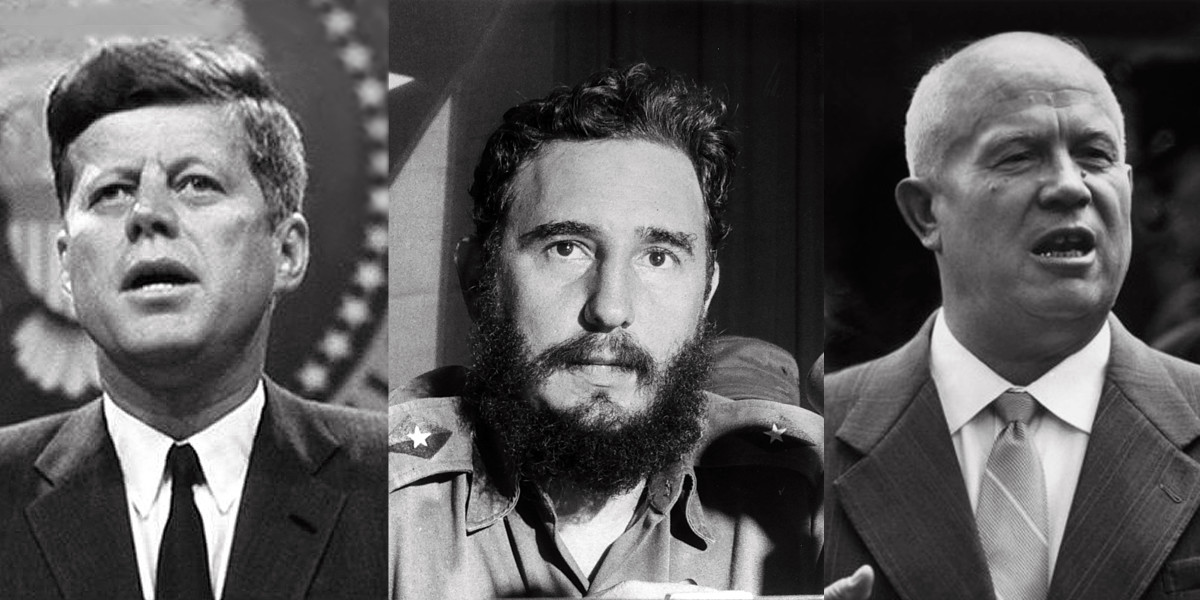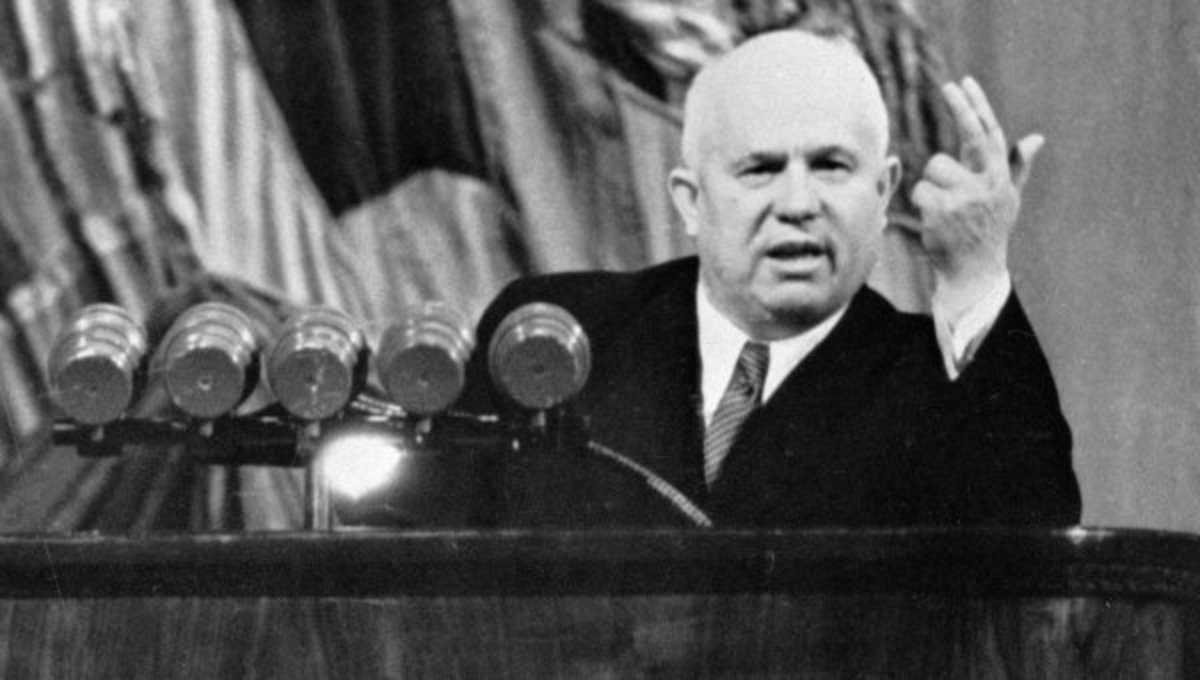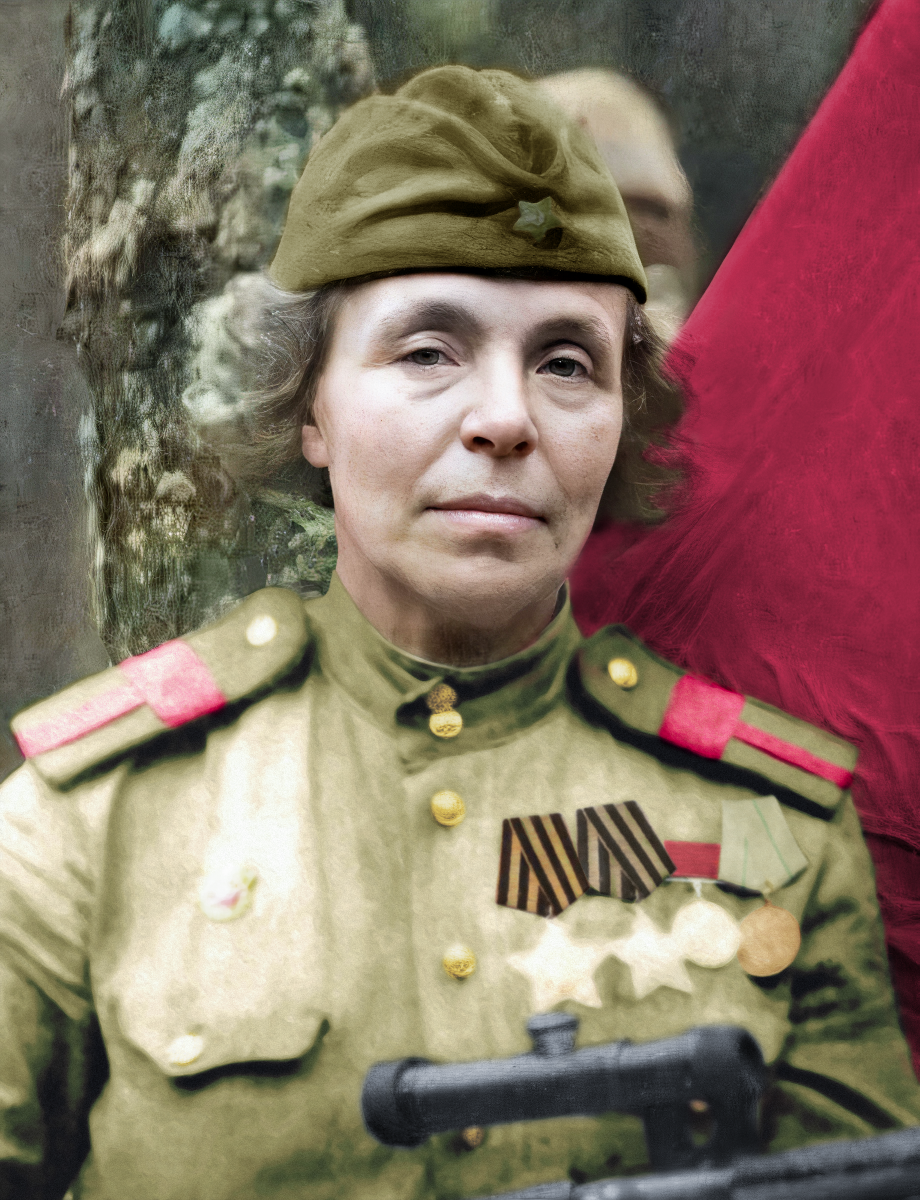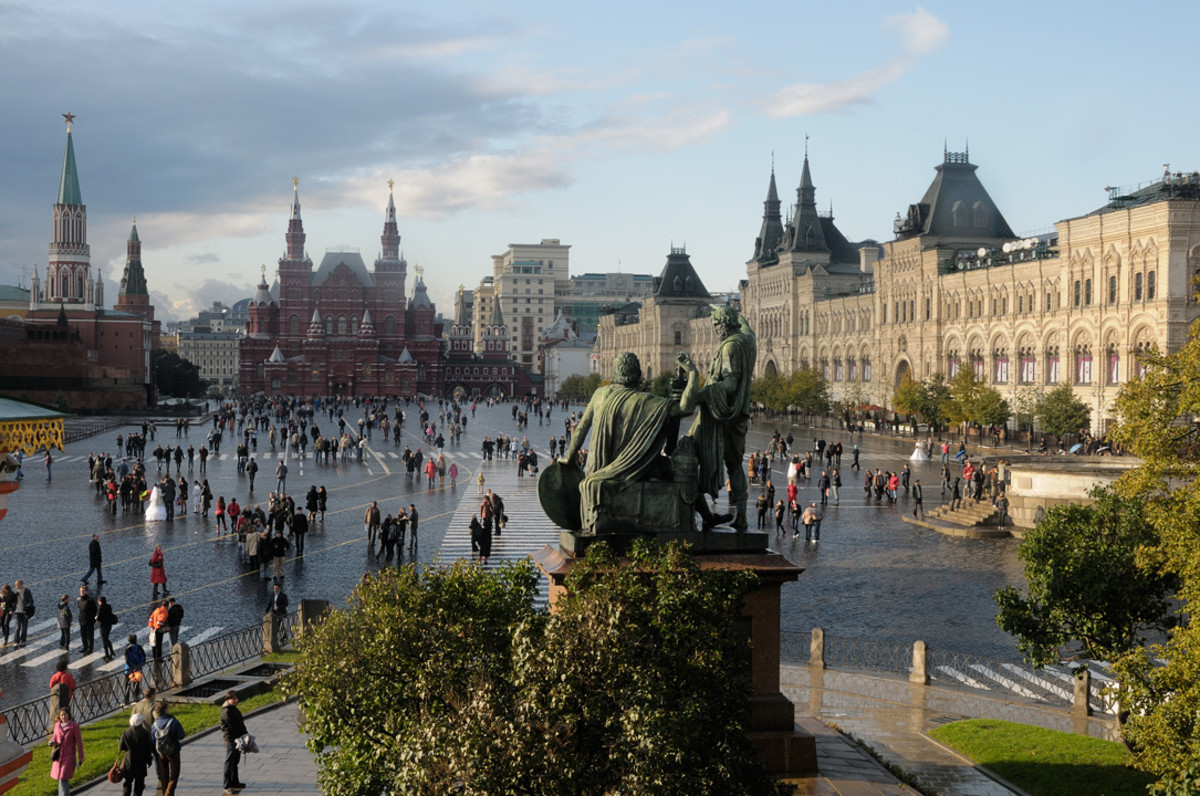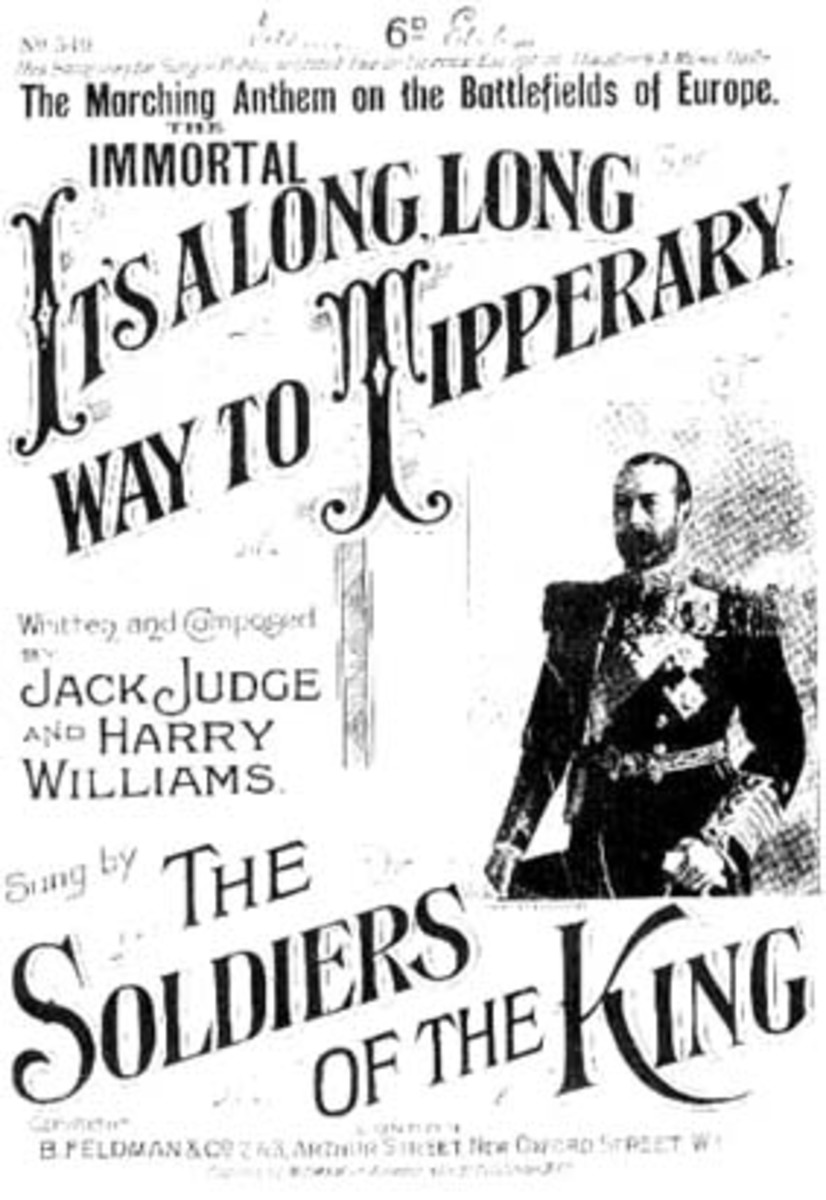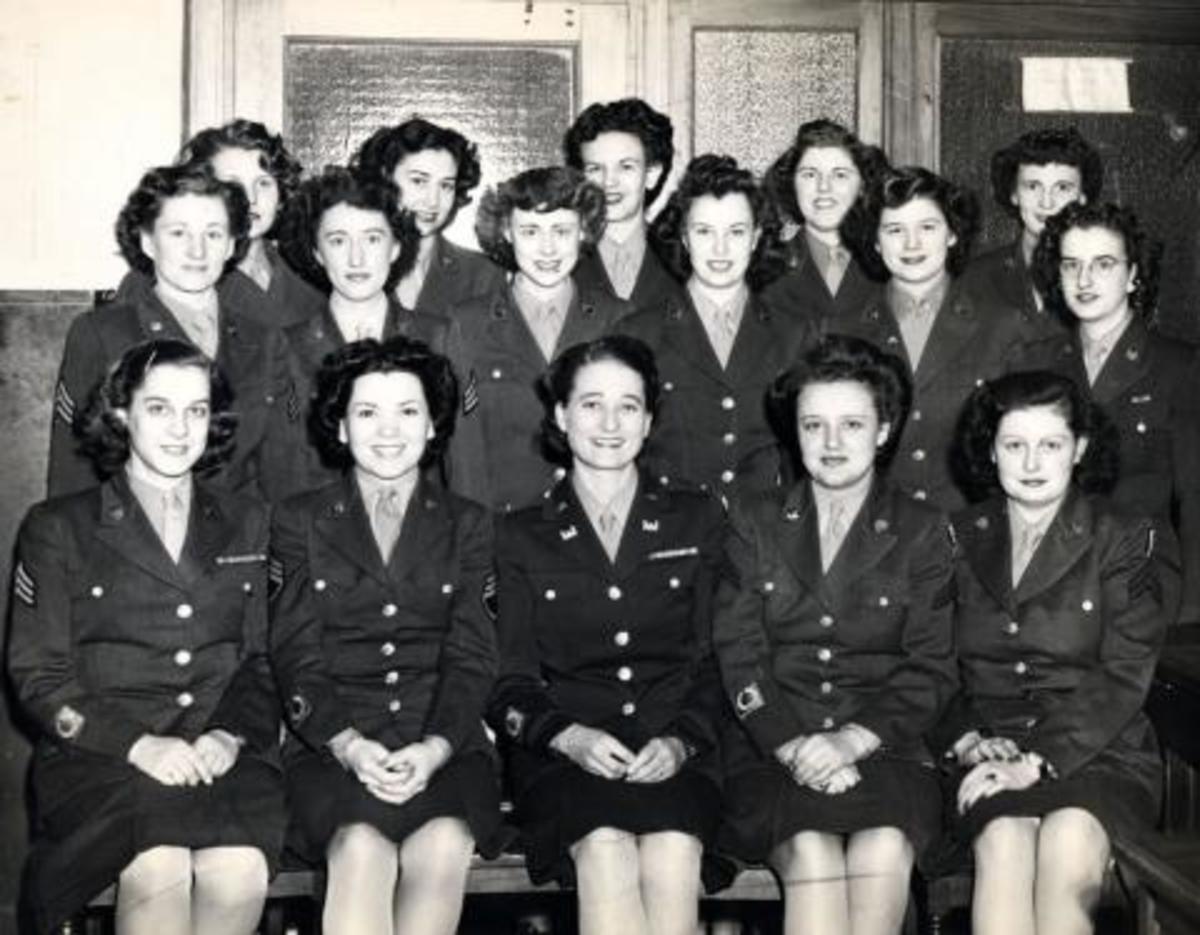- HubPages»
- Education and Science»
- History & Archaeology»
- History of the Modern Era
Stalin's Attempt to Maintain the Ideological Purity of the Communist Regime during the Postwar Period
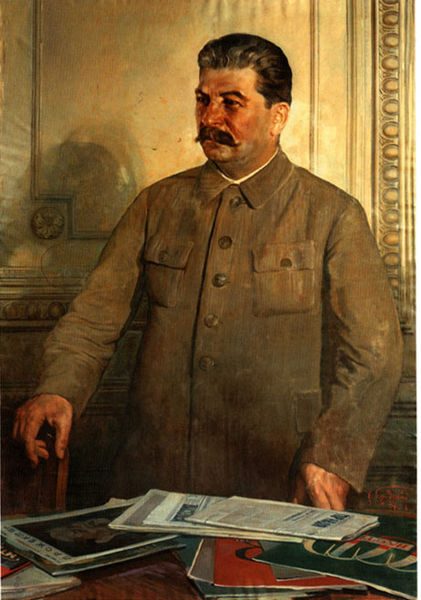
The approximate eight years from the end of the Second World War (1945) to his death in 1953 mark the postwar period of Josef Stalin’s rule of the Communist regime in the Soviet Union. The war had done incredible damage to the nation’s infrastructure and marked a significant decrease in population, but its political impact is what really defines the regime in this period. Rather than the expected relaxation of harsh and restrictive wartime policies, the Soviet people experienced a renewed crackdown from their government. Stalin was pushing to restore war-shattered urban/industrial infrastructure, but regaining military supremacy and a focus on defence became an even higher priority to the neglect of the aforementioned. Coupled with the physical reconstruction of the nation and its defences, Stalin was very concerned about the purity of the Communist regime’s ideology, which had been compromised by the war and the war’s social, economic, and political implications. Stalin’s immediate and ruthless reassertion of total control of the Communist regime in the Soviet Union as well as its satellite nations was fuelled by his concern that the war-torn nation would fall before the encroachment of Western capitalism on an ideological level, and the West’s military supremacy after the Second World War and going into the Cold War on an infrastructural level. Stalin’s reaction to this perceived threat from the West was to enact purges intended to reverse the Western capitalism’s ideological tainting that began with the war, enact both social and legal repression within the Soviet Union, and tighten his grip on the Communist satellites.
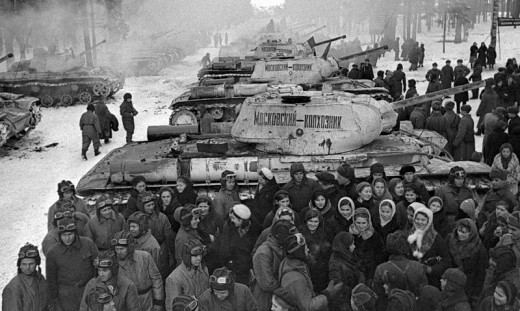
The general atmosphere at the end of the Great Patriotic War, as it was known to the Soviets (and modern Russians, for that matter), was one of sober optimism. People, of course, understood that the nation had been devastated by the war and that the daunting task of rebuilding lay before them, but there was also a profound faith in the potential restoration of long lost justice and human dignity (Duskin 11). Naturally, the assumption was that life would become easier in the aftermath of their wartime display of patriotism and loyalty to Stalin and that they would never again suffer the harsh policies of the purges, five-year plans, and the social and legal suppression they were subjected to in the years leading up to, and during, the war (Filtzer 1013). Unfortunately, the optimism of the people immediately following the war was all for naught:
To Stalin, it did not appear to matter that the Soviet people were spiritually and physically exhausted, that they longed for a few moments’ respite from the struggle to forge ahead, that they direly needed a touch of happiness in their lives. Indeed, refusing to concern himself with the people’s immediate needs, he hastened instead to proclaim that there would be no pause, no relaxation. (Adams 169).
Indeed, Stalin was not at all concerned about the plight of ordinary people (Conquest 270). It was very clear that his goal was to press on with the ruthlessness of wartime and prewar development policies for the sake of industrial growth and restoration of wartime infrastructural damage (Adams 170). The narrow-minded focus of Stalin’s regime policy in 1946 and 1947 on industry and infrastructure, particularly as it pertained to military supremacy, resulted in a neglect of agriculture that caused the 1946-1947 famine, exacerbating the dire situation of the common people (Filtzer 1014). This famine was not entirely unavoidable, but it could have been significantly eased if there had not been such an obsessive focus on industrial and military reconstruction (Boterbloem 229-240). Despite the severity of the famine, Stalin seems to have believed that farmers and other rural inhabitants were doing just fine and continued to heavily tax them (Kadt 149). In any case, he still did take action as “[he] accepted massive United Nations Relief assistance in the immediate crisis of postwar famine” (Conquest 271). However, he made his ultimate choice between the poverty of the nation and political cooperation when he chose the former and turned down the Soviet’s invitation to the Marshall Plan (Conquest 271), which was a recovery program extended to all European countries by the United States to help stimulate their respective economies (Wettig 137) which sustained varying degrees of damage as a result of the war.
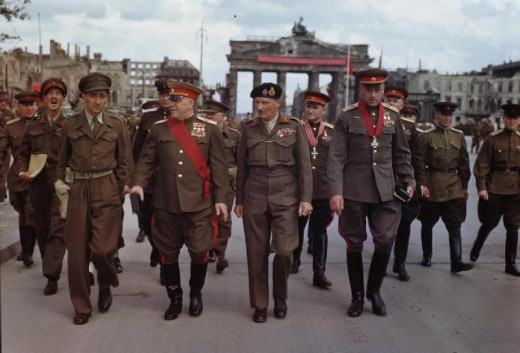
I will return to the implications of the Marshall Plan and how it, among other things, is crucial to our understanding of Stalin’s postwar policies momentarily. First, it is important to expand on Stalin’s unbalanced focus on the defence sector. Despite the unprecedented wartime losses to Russia’s population and infrastructure, and as a direct consequence, its agricultural and product manufacturing potential, Stalin concentrated instead on rebuilding military defence (Boterbloem 230). A quick glance at the proceedings in the contemporary United States elucidates the pressure he must have felt to focus on defence at all costs:
[Stalin] was deeply concerned by the Soviet Union’s economic exhaustion at the end of the war, especially when compared with the tremendous new productive power acquired by the United States and the latter’s ominous control over a new nuclear explosive force. Given the distrust of the capitalist world embedded in his mind by his ideological faith as well as by his character and experience, he reacted compulsively to drive his scientists and his economy toward the swiftest possible development of the Soviet atomic bomb. (Adams 169).
Quite simply, “The Russians were weaker than the Americans, and both sides knew it” (Leffler 84). Although they never went into open war against one another, (Boterbloem 229) it is easy to understand the pressure Stalin must have felt to obtain military superiority over the West during the early years of Cold War. It is clear that Stalin was apprehensive of the West for very practical reasons in the postwar period.
1950 Poster for the Marshall Plan
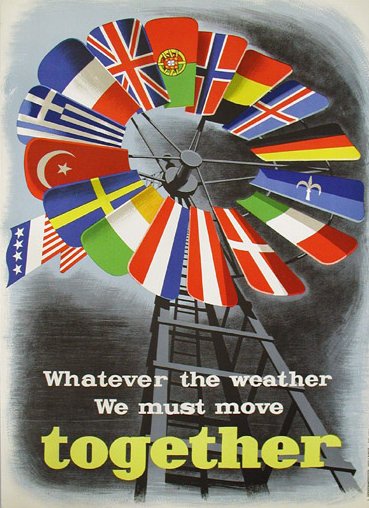
In addition to military competition, Stalin was concerned with maintaining a firm grip on the Soviet Union’s satellites. Stalin at first seemed open to cooperation with the West, but by June 1947, he became set on tightening his grip on the satellite nations in response to a perceived security threat from the United States (Leffler 64-65). A notable example of this tightening is the purge campaign that took place in Poland due to Stalin’s distrust of Polish Communists (Parrish 225). Also in Poland, there was constant persecution of non-communist groups and the denial of the People’s Party’s ticket through the ostensible enactment of terror, which led to Poland becoming a communist bloc (Wettig 81). The Americans responded in turn to such Soviet measures by recoiling into a similar state of security in their attempt to organize the rest of the world resulting in mutual mistrust between themselves and the Soviets and an increasingly antagonistic relationship (Leffler 64-65).
Returning now to the Marshall Plan, it deserves attention as one of several specific issues, including the arms race, that are crucial to a concerted understanding of Stalin’s postwar policies. The Marshall Plan was not well received by the European Communist nations, to say the least:
The Soviet Union and its East-Central European satellites refused this aid when conditions for eligibility appeared to constitute an infringement of their national sovereignty. It added to the Soviet suspicion that the West was committed to destroying the USSR and Communism and that it was willing to use any means toward this goal. (Boterbloem 237).
The Soviet interpretation of the Marshall Plan was that it was a Western plot to subvert their influence, automatically rendering anyone who accepted it aligned with the enemy (Wettig 139). It is true that it was an attempt to contain communism and balance Eastern and Western European economies through international trade between capitalist countries, but its rejection by the Soviet Union and its satellites made the resulting intensification of hostilities a vain sacrifice (Day 49). On this larger scale, it is obvious that there was a general agreement within the Communist regime that this recovery program was bad news, but considering the Marshall Plain in terms of the dynamic between the Soviet Union and its satellites reveals how concerned the former was about losing its grip on the latter. Czechoslovakia and Poland were very interested in accepting the American’s invitation, and Stalin interpreted this as direct defiance and responded swiftly as “he dreaded losing control of Eastern Europe more than anything else” (Wettig 138). Stalin was at first indecisive regarding the issue but soon took up Andrei Zdhanov’s position that the Marshall Plan was an attempt by the Americans to subordinate relief recipients and enact economic and political domination over them: Needless to say, Stalin urged the satellites to resist the Marshall Plan and to disassociate themselves with anyone who supported it (Leffler 66). Through these actions, he was entirely successful in causing the complete failure of the Marshall Plan:
Responding to Soviet pressure, Poland, Yugoslavia, Romania, and Bulgaria all declined to take part in a European conference summoned to draw up a response to Marshall’s proposals. Soviet foreign minister Molotov did attend, but shortly afterward Moscow determined that neither the Soviet Union nor any of its allies would participate in the Marshall Plan. (Day 49-50).
Stalin’s insistence that the satellite nations resist recovery assistance was about more than fighting the Marshall Plan, it was about reconstructing the Soviet Union and aligning its foreign policy with that of foreign Communist parties, all for the sake of them serving the interests of the Soviet state as effectively as possible (Leffler 67). It was for this reason that Stalin was so strongly against the independence of Yugoslavian communists, (Wettig 86-87) he “demanded rigid compliance and subordination” (Leffler 67). We will see how strictly Stalin demanded complete control over the situation in Yugoslavia.
Josip Broz Tito, 1942
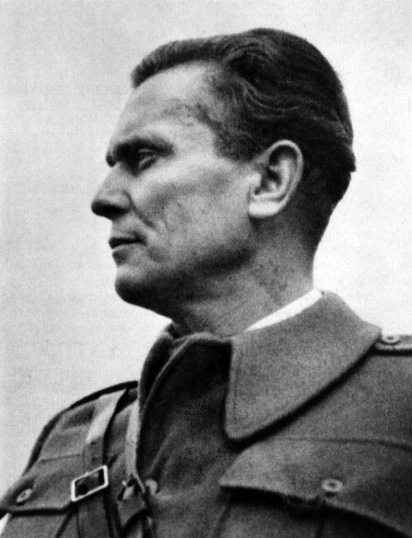
Josip Tito, the president of Yugoslavia at the time, is an example of the lack of internationalist solidarity between the Soviet Union and other communist regimes in the early postwar years that were not subject to the imposed conformity of the Soviets (Wettig 73). While Tito more or less followed instructions coming out of Moscow during the war, (Wettig 73) his decision to maintain a Communist regime different from, and independent of, that of the Soviet Union marked his transformation into Stalin’s top enemy:
In the postwar years it was Tito who became the man most hated by Stalin. As early as 1944-45 Stalin felt that Tito was beginning to display excessive independence, yet he was never able to impose total submission or subordination, and this gradually led to the severance of all relations with Yugoslavia: Tito was declared to be ‘enemy number one’. (Kadt 149).
After this, there was undoubtedly follow-up from the Ministry of State Security (MGB) who attempted to subvert Tito, “whose break from the Soviet Union was a major defeat for Stalin and a cause for additional paranoia. For Stalin, Tito became the new Trotsky” (Parrish 226). It did not take long for Stalin to make an example of Tito and by 1949, “Titoism”, along with spying for the Americans, became an offence for which Communist leaders in the satellite states could be charged (Boterbloem 231). Stalin’s stubborn insistence on the complete subordination of extra-Soviet communist nations is likely tied up in his paranoia surrounding potential Western espionage.
Before going into detail about the spying/intelligence tensions between the Soviet Union and the United States, the implications of the Marshall Plan warrant yet further attention. Vyacheslav Molotov interpreted the American attempt to involve itself with the inner workings and economy of Europe through postwar recovery aid as an attempt to establish further outlets for capitalist export and to make the European economies in question “dependent on US interests” (Leffler 65). Some even went so far as to draw a comparison between postwar America and Nazi Germany, justified on the basis that “Hitler had come to power during the Great Depression as an agent of finance capital and the biggest monopolies” (Day 55). In essence, the Soviet’s believed that the economic expansion of the United States into the Soviet Union was a threat (Wettig 73). Undoubtedly, one of the most significant contributing factors to said apprehension regarding the United States is that they were clearly an impressive, internationally recognized economic power, and potentially the most powerful (Conquest 287). Indeed, “the Second World War established the position of the United States as the most important capitalist country and the indisputable leader of the entire capitalist world” (Kadt 142). Clearly, Stalin had much to fear from the United States in terms of its economic and coincidental military prowess.
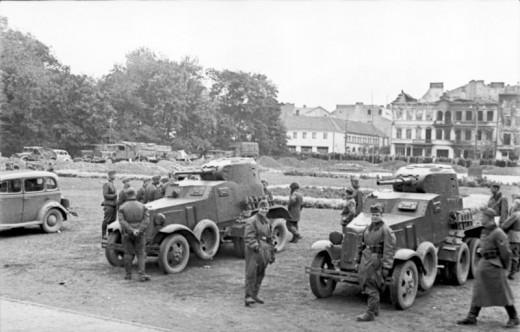
In addition to standing, from a Soviet perspective, as an antagonistic world power, the United States also exemplified a capitalist ideology that was subversive to the Communist regime (Conquest 278). Around the summer of 1947, Soviet foreign and domestic policy became increasingly characterized by the idea that, on an ideological level, capitalism had become a direct and invasive threat to the Communist regime, and that turning inward, isolationism, had become an important measure for the sake of ideological preservation (Boterbloem 229). Indeed, throughout the first postwar decade, there were endemic sentiments of Russian ethnic primacy (Brandenberger 242) which seem to coincide with their frantic attempt to isolate the Communist regime from Western capitalism. Needless to say, there was a generally “hostile view of the non-Communist Other” (Boterbloem 240) which led to a fear of tainting therefrom.
It is clear that Stalin feared the infection of Western capitalist values in the Communist regime. A major source of this “tainting” were soldiers returning at the end of the war regaling people with stories rich with ideologically dangerous ideas:
As Stalin viewed it, the soldiers who brought back stories of the incredible wealth of people in not merely Czechoslovakia or Austria, but even Poland and Bulgaria, had not properly understood the ‘necessity’ for the economic sacrifices they had made. They were in danger of being seduced by the riches of the West, as the intelligentsia was in danger of being seduced by its values. (Conquest 171).
Indeed, Stalin was very much concerned about the implications “of the wartime experience of millions of Soviet citizens who had worked or fought beyond Russian borders” (Adams 171). It is at this point that we return to the significance of counter-intelligence efforts to our understanding of the Soviet Union’s apprehension regarding contact with Western, particularly American, capitalism. Stalin is quoted as saying “that the work against our main adversary (U.S.) is impossible without adhering to the principle of a grand intelligence network” (Parrish 223). This renewed vigilance regarding state secrets really started to take off early in 1947 and it soon “led to the virtual prohibition of any contact by Soviet citizens with the non-Communist world” (Boterbloem 236). The specific implications of this prohibition were the widespread restriction on where people could live and work and their general mobility within their own nation through contrived passport and residence laws, (Shearer 418-419) as well as the prohibition of marriage between Soviet citizens and foreigners (Boterbloem 236). Coupled with repressive measures for the sake of state intelligence and the rejection of Western capitalism was a relentless effort to completely sovietise East-Central Europe (Boterbloem 237). The Red Army took care of suppressing outright protest to this takeover, while the MBG (secret police) helped Communist leaders suppress sporadic outbreaks of protest (Boterbloem 237). There is little doubt that this social and military repression is intricately intertwined with repressive legal policies.
Map of Gulag Locations
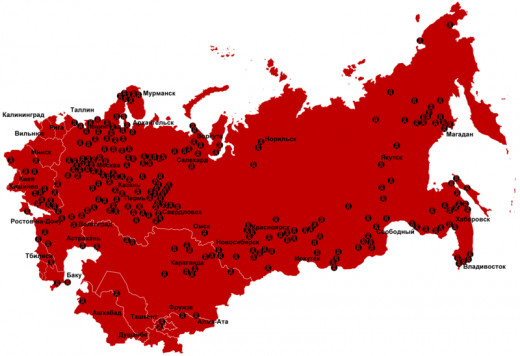
The postwar period saw a change in legal policy that resulted in an increase in repression above that of prewar levels. Beyond renewed purges, the civilian population took a severe blow as mass arrests were implemented, over half of which being due to labour violations (Filtzer 1013-1014). Prisons and labour camps were filling very quickly in this period as the rate of penal incarceration reached an all-time high (Shearer 405). The Gulag (a series of brutal concentration camps and jails) in particular “had more inmates than ever between 1945 and 1953 (between 2 and 3 million convicts)” (Boterbloem 231). The unprecedented number of arrests ordered by Stalin of not only real foes, but merely alleged as well, is reminiscent of the indiscriminate waves of persecution of the prewar period (Boterbloem 230). The clear goal was to make sure that the masses were kept in line so that they were kept both under control, and working efficiently (Tamás 270). Large-scale prison and labour camp internment had the combined benefit of sweeping ideological radicals in the form of outright dissidents and West-tainted soldiers, as well as instilling the social control of fear-of-punishment into people who would otherwise fail to strive for near impossible to impossible standards of industrial production or seek to subvert the Communist regime through purposeful affiliation with Western capitalist values.
Through rejection of the Marshall Plan, his tightened grip on Soviet satellites, expectation of complete subordination, implementation of social and legal repression, and obvious apprehension regarding Western (American) capitalist ideology, military supremacy (atomic bomb), and espionage, Stalin made clear his genuine fear that the Western world and its capitalist values were an overwhelming threat to the integrity of the Communist regime, and therefore called for the aforementioned measures.
Bibliography
Adams, Arthur E. Stalin and his Times. Prospect Heights: Waveland Press, 1986.
Boterbloem, Kees. “Empire Besieged: Postwar Politics (1945-1953).” In Russian and Soviet History: From the Time of Troubles to the Collapse of the Soviet Union, edited by Steven A. Usitalo and William Benton Whisenhunt, 229-240. Lanham: Rowman and Littlefield, 2008.
Brandenberger, David. “Stalin, the Leningrad Affair, and the Limits of Postwar Russocentrism.” Russian Review 63, no. 2 (April 2004): 241-255. Accessed September 27, 2011.
Conquest, Robert. Stalin: Breaker of Nations. New York: Viking Penguin, 1991.
Day, Richard B. Cold War Capitalism: The View from Moscow 1945-1970. New York: M.E. Sharpe, 1995.
Duskin, Eric J. Stalinist Reconstruction and the Confirmation of a New Elite, 1945-1953. New York: Palgrave, 2001.
Filtzer, Donald. “The Standard of Living of Soviet Industrial Workers in the Immediate Postwar Period, 1945-1948.” Europe-Asia Studies 51, no. 6 (September 1999): 1013-1038. Accessed September 17, 2011.
Kadt, Ellen de, trans. On Stalin and Stalinism. Oxford: Oxford University Press, 1979.
Leffler, Melvyn P. The Specter of Communism: The United States and the Origins of the Cold War, 1917-1953. New York: Hill and Wang, 1994.
Parrish, Michael. The Lesser Terror: Soviet State Security, 1939-1953. Westport: Praeger 1996.
Rittersporn, Gábor Tamás. Stalinist Simplifications and Soviet Complications: Social Tensions and Political Conflicts in the USSR, 1933-1953. Chur: Hardwood Academic Publishers, 1991.
Shearer, David R. Policing Stalin’s Socialism: Repression and Social Order in the Soviet Union, 1924-1953. New Haven and London: Yale University Press, 2009.
Wettig, Gerhard. Stalin and the Cold War in Europe: The Emergence and Development of East-West Conflict, 1939-1953. Lanham: Rowman and Littlefield, 2008.

